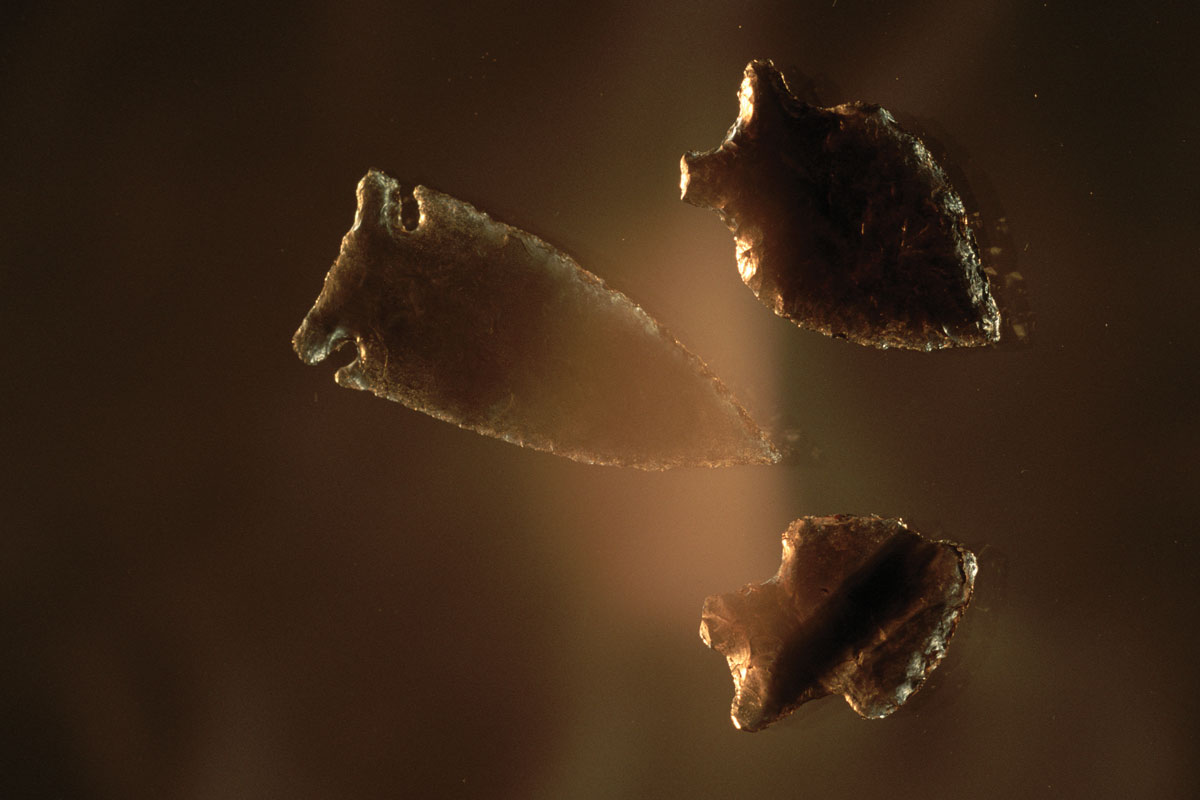Dragonglass, They Call It
In Anthropology 308, obsidian offers a glimpse into ancient human lives and cultures.
Ten thousand years ago, a young woman in what would one day be Japan fixed a black, glassy arrowhead to the shaft of her spear. Five thousand years ago, an elderly man on a Pacific island laid out the black, glassy implements he would use to give his grandson his first tattoo. Five hundred years ago, an Aztec emperor stood in a splendid palace surrounded by priests, and stared into a black, glassy mirror hoping to see visions of the future. Today, Klamath elders throughout Oregon continue to take their children to ritual sites to collect black, glassy stones. Most people today have little if any relationship to the volcanic glass we know as obsidian, which has long been prized for its translucency, color, and shimmer. But from the earliest periods of human history, societies all over the world have traveled and traded for obsidian, and used it to create tools, weapons, adornments, and ritual objects. Obsidian has long been prized not only for its sharpness, but also for its distinct physical properties. Its translucency, color, and shimmer make it an aesthetically pleasing material, with each obsidian source producing its own unique combination of hues and inclusions. In Anthropology 308: Obsidian Rocks! A Natural and Social History, we explore how, by studying stone objects and investigating what materials they utilize and the contexts in which they were made and used, we can learn much about the daily lives and relationships of ancient and contemporary peoples.
